Homeowners insurance is important. It provides peace of mind that, in the event of an emergency or disaster, your home and belongings will be protected. Unfortunately, cost increases for homeowners insurance are becoming more and more common. What may come as a surprise to many homeowners, though, is that those with a newer home will likely pay less for a homeowners insurance policy. Here, we'll explain why homeowners coverage is cheaper for new construction, tell you which companies offer the highest level of coverage at the lowest price, and remind you of other factors you may want to consider before deciding on a homeowners insurance policy.
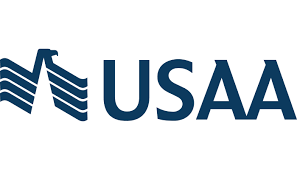
Bottom Line
Military families are not known for living in one spot for long. The ability to take USAA insurance coverage with them wherever they go is one of the features we like most about this company. USAA is known for its customer service and claims satisfaction. In the J.D. Power 2022 U.S. Home Insurance Study, USAA is ranked as the best insurance company, earning a score of 884 out of 1,000. Plus, with an average annual premium of only $782 per year, USAA is a bargain home insurance company. No matter where they go USAA members enjoy some of the lowest homeowners insurance rates and a high level of customer satisfaction.
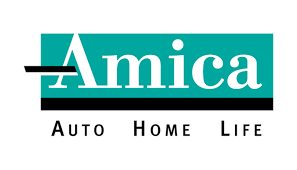
Bottom Line
Although USAA has the highest score in J.D. Power's 2022 Home Insurance Study, it is technically not rank eligible because it is only available to military members. The honor belongs to Amica, taking the highest rank in the homeowners insurance segment for a second consecutive year, with a score of 849. Amica is available in the 48 contiguous states and made our list for a couple of reasons. The first is price. The average annual Amica homeowner's policy for a new home comes in around $826 per year. That's less than $69 per month to insure a home with a company that looks out for its customers in some unique ways.
For example, Amica offers a feature called Contract Connection that connects homeowners with the contractors they need and can trust. And in some states, Amica allows homeowners to pay a bit more upfront for their homeowners insurance, but then returns a portion of the homeowner's premium as a dividend payment. Typically, these dividends range from 5% to 20% of the annual premium, making it the only insurance provider we know of offering dividends on a home insurance policy.
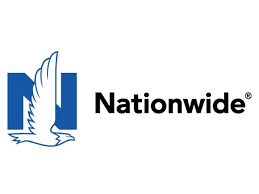
Bottom Line
Nationwide is one of the best cheap home insurance companies, in part thanks to its large selection of homeowners discounts, which helps it offer competitive rates to most homeowners. According to the Ascent's own analysis of standardized personas, the average Nationwide premium for a new home in 2022 was $712, compared to a national average of $984. Nationwide doesn't skimp on coverage either, offering enhanced coverage options for roofing and personal belongings that many other insurers don't.
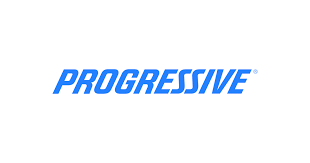
Bottom Line
With an average annual rate of $533, (less than $45 per month), Progressive provides the cheapest premiums on our best homeowners insurance for new construction list. The best thing about Progressive's standard coverage is how much it covers. In addition to dwelling coverage, insurance protection extends to structures not attached to the main dwelling. Even personal property stored in those outbuildings is covered from peril, like storm or theft. Although it offers the lowest price, Progressive doesn't underwrite policies and policyholders don't make claims through Progressive. As a result, customers must rely on a third-party affiliate to provide good service, which can be hit or miss.
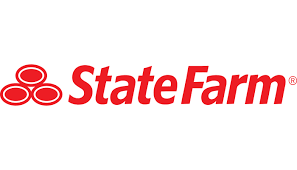
Bottom Line
State Farm may be the insurance company your grandparents or great-grandparents used, but that doesn't mean it hasn't kept up with the times. The average annual State Farm homeowners policy for a new home comes in around $952 per year. While its coverage is priced higher than the other companies on the list, State Farm offers plenty of options to customize your policy. State Farm offers traditional coverage, like fire and wind protection. It also offers decidedly 21st-century coverage, like a rider that pays the homeowner up to $50,000 if they suffer a loss due to fraud or identity theft.

Bottom Line
Allstate homeowners insurance offers some of the most generous discounts in the industry. With flexible policies and a large network of agents, many people find Allstate provides the support they need both when purchasing homeowners insurance and managing claims. The average annual State Farm homeowner's policy for a new home comes in around $930 per year. Allstate offers standard home insurance coverage options, such as dwelling insurance and personal property coverage. But this insurance provider also provides the opportunity to add on many other types of protection, including identity theft protection, water back-up coverage, and green improvement reimbursement, which allows policyholders to replace damaged or destroyed items with more energy-efficient models.
How much does insurance cost for a new home?
To put the cost of insuring a new home in perspective, the average annual rate to insure an "average" home (meaning a home of any age) is $1,787. The average annual rate to insure a home built in 2022 is $984, 45% less. Naturally, the total cost depends on factors like the size of the home, location, the deductible, and any special features. Still, any time one compares a new home to an older home with the same features, it's going to cost less to insure the newer structure.
This is because new construction homes often have fewer safety hazards, due to being built with newer materials. Therefore, newer homes pose less of a risk to the insurer. Additionally, there are fewer opportunities for damage due to age or use. For example, there's less chance of a leaky roof or wood rot. Homeowners who are getting ready to move into recently built homes can take comfort in knowing their insurance costs will likely be lower than someone buying an existing property.
How to reduce the cost of your homeowners insurance premiums
No matter how low an initial quote may be, there are steps a homeowner can take to reduce their homeowner's premium even more. For example:
- Shop smart by comparing one policy to another after all discounts are factored in. Many people have made the mistake of underestimating how much discounts can lower their homeowners insurance premiums. And speaking of discounts, apply for every one you're eligible for.
- Bundle insurance products. Bundling two or more insurance products (like homeowners, auto insurance, and life insurance) through the same company will almost always land you an enviable discount.
- Maintain good credit. Another thing that surprises some people is the role their credit score plays in insurance costs. Based on years of studies, the insurance industry says credit score plays a role in how many claims are made. The higher a person's credit score, the less likely they are to make a claim. For that reason, insurers tend to offer lower rates to homeowners with a strong credit score.
- Upgrade security. Whether the upgrades include deadbolt locks, smoke detectors, a burglar alarm, or fire extinguishers in the house, a homeowner is likely to receive a bit of a discount for each.
- Consider perils common to the area. For example, someone who lives in Alaska may want to have an older home retrofitted to better withstand an earthquake. A homeowner in Florida may add storm shutters, and someone living in Oklahoma may consider upgrading their roof to one that is able to survive windstorms and other disasters. The more a homeowner does to protect their home from peril, the less an insurer believes it will have to pay to repair.
Note: It's important the coverage limit for any particular peril matches the risk of that peril occurring. Representatives of the best home insurance companies are happy to help you focus on how much home insurance you need.
How to determine the best insurance for your new home
Homeowners insurance is not a one-size-fits-all proposition. What works for you may not work for a neighbor with a similar home. Here are five steps to take to determine which homeowners insurance policy is the best fit for you and your property.
- Make a list of what you want in a policy. Do you want minimum, barebones coverage or do you want a policy that will rebuild your home if it's destroyed?
- Determine how much of a deductible you're comfortable with. The best move with a deductible is to put the funds away where they can easily be accessed. For example, if your deductible is $1,000, put that money in a special savings account that draws interest. If you never need it, great. But if you do need it, you'll have it.
- Think about what you own and what you'd be upset about losing. For example, if you have a great wine collection or unusual stained-glass windows, you want to make sure those things will be covered in the event of peril.
- Talk to agents from several different companies. Price is important, but other factors -- like the financial stability of the company and customer service -- also matter.
- After comparing the coverage and premium costs of three or more insurers, choose the one you suspect will help you rest easiest at night. For some, basic coverage is enough. Others are most comfortable with extra coverage in place.
Ultimately, homeowners should take the time to evaluate their needs and shop around for coverage they can afford while still being adequately protected. Homeowners who are getting ready to move into recently built homes can take comfort in knowing their insurance costs will likely be lower than someone buying an older property.
| Offer | Best For | Next Steps |
|---|---|---|
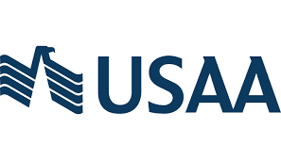
USAA
|
Great For: Best for military members and their families | |

Amica
|
Great For: Best for its dividend option | |
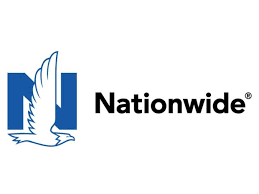
Nationwide
|
Great For: Best for optional replacement coverage | |
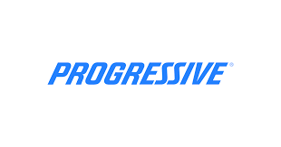
Progressive
|
Great For: Best for low pricing | |
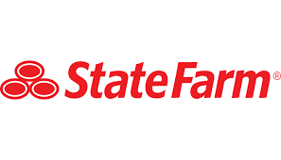
State Farm
|
Great For: Best for comprehensive coverage | |

Allstate
|
Great For: Best for customizable coverage |
FAQs
-
Yes, but it's not the same type of property insurance as you'll carry after you've moved into the home. Because you have money invested in the property, you also have risk. What you will need is called "builder's risk insurance coverage." This type of policy protects your investment if something happens to the house while it's being built.
-
No, since the best homeowners insurance companies expect fewer things to go wrong with a newly built home than an existing house, insurance is less expensive for new construction.
Homeowners Insurance Ratings Methodology
The data found on this page is a combination of publicly available quote data obtained directly from the carrier as well as insurance rate data from Quadrant Information Services. These rates were publicly sourced from the top ten (10) to fifteen (15) carrier markets, within each state, based on annual written premium and should be used for comparative purposes only -- your own quotes may be different.
Insurance products are then rated on a scale of one to five stars, primarily focusing on:
Pricing
With so many options for insurance across the board these days, it's easiest, and quite effective, to first look at the bottom line. Do single out competitive prices across insurance categories it's important to focus on:
- Deductibles
- Terms
- Coverage
- The fine print
Discounts
Insurance provides coverage for unexpected financial burdens and piece of mind. But it's important to check your policies and see how you can lower your premium. Insurance companies offer discounts for all sorts of things now from safety devices to good grades to automatic bill pay. Pay attention to:
- Discounts offered
- Variety of discounts
- Discount qualifications
Perks/Benefits
The benefits of insurance these days have gone far beyond just what your policy covers. Most companies and policies come with perks -- some of which may be completely unrelated to your insurance policy. Take a look at:
- Non-pricing related perks offered
- Benefits unrelated to your coverage
- Perks that stand out in the industry
- Will you actually use the benefit?
Customer Service/Claims Process
Policy research and coverage options are great, but how is the process when you have to actually use your insurance policy? The best coverage doesn't hold much value if it's a hassle to get paid out. Pay special attention to:
- How hard it is to file a claim
- If your provider has a history of resisting payouts
- The customer satisfaction scores for your provider
Our Insurance Expert
We're firm believers in the Golden Rule, which is why editorial opinions are ours alone and have not been previously reviewed, approved, or endorsed by included advertisers. The Ascent, a Motley Fool service, does not cover all offers on the market. The Ascent has a dedicated team of editors and analysts focused on personal finance, and they follow the same set of publishing standards and editorial integrity while maintaining professional separation from the analysts and editors on other Motley Fool brands.